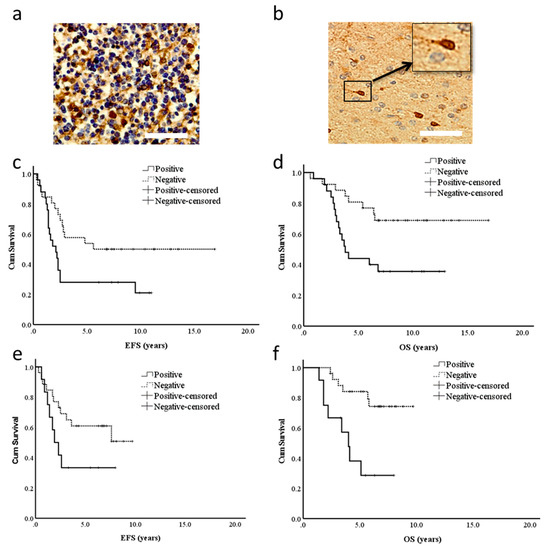|
Αρχειοθήκη ιστολογίου
-
►
2023
(138)
- ► Φεβρουαρίου (74)
- ► Ιανουαρίου (64)
-
►
2022
(849)
- ► Δεκεμβρίου (61)
- ► Σεπτεμβρίου (74)
- ► Φεβρουαρίου (65)
-
▼
2021
(2936)
- ► Δεκεμβρίου (59)
- ► Σεπτεμβρίου (180)
-
▼
Απριλίου
(241)
-
▼
Απρ 26
(17)
- Dual mTORC1/mTORC2 inhibition as a Host-Directed T...
- In Vitro Activity of Oxazolidinone against Nontube...
- Multidrug Resistance Efflux Pumps in Acinetobacter...
- Luminore CopperTouch™ surface coating effectively ...
- Quinolin-(1H)-imines as a new chemotype against le...
- Melting the Eis: non-detection of kanamycin resist...
- Overcoming culture restriction for SARS-CoV-2 in h...
- External Evaluation of Two Pediatric Population Ph...
- Traumatic ischemic injury in a top of the basilar ...
- The frequency of cytomegalovirus non-ELR UL146 gen...
- Episodic headache with spontaneous hypothermia rev...
- Cancers, Vol. 13, Pages 2100: BLBP Is Both a Marke...
- Cancers, Vol. 13, Pages 2099: De-Escalation of The...
- Critical illness-related corticosteroid insufficie...
- Cancers, Vol. 13, Pages 2101: Emerging Lab-on-a-Ch...
- Correlation of Voice Hoarseness and Vocal Cord Pal...
- Web-Based Educational Intervention for Patients Wi...
-
▼
Απρ 26
(17)
- ► Φεβρουαρίου (325)
-
►
2020
(1624)
- ► Δεκεμβρίου (293)
- ► Σεπτεμβρίου (234)
- ► Φεβρουαρίου (28)
-
►
2019
(13362)
- ► Δεκεμβρίου (19)
- ► Σεπτεμβρίου (54)
- ► Φεβρουαρίου (5586)
- ► Ιανουαρίου (5696)
-
►
2018
(66471)
- ► Δεκεμβρίου (5242)
- ► Σεπτεμβρίου (5478)
- ► Φεβρουαρίου (4835)
- ► Ιανουαρίου (5592)
-
►
2017
(44259)
- ► Δεκεμβρίου (5110)
- ► Σεπτεμβρίου (5105)
-
►
2016
(7467)
- ► Δεκεμβρίου (514)
- ► Σεπτεμβρίου (1038)
- ► Φεβρουαρίου (793)
Αναζήτηση αυτού του ιστολογίου
Δευτέρα 26 Απριλίου 2021
Dual mTORC1/mTORC2 inhibition as a Host-Directed Therapeutic Target in Pathologically Distinct Mouse Models of Tuberculosis [Experimental Therapeutics]
In Vitro Activity of Oxazolidinone against Nontuberculous Mycobacteria, Including Macrolide-Resistant Clinical Isolates [Susceptibility]
|
Multidrug Resistance Efflux Pumps in Acinetobacter spp.: An Update [Minireviews]
|
Luminore CopperTouch™ surface coating effectively inactivates SARS-CoV-2, Ebola and Marburg in vitro [Antiviral Agents]
|
Quinolin-(1H)-imines as a new chemotype against leishmaniasis: biological evaluation and mechanistic studies [Mechanisms of Action]
|
Melting the Eis: non-detection of kanamycin resistance markers by routine diagnostic tests and identification of new eis-promoter variants [Mechanisms of Resistance]
|
Overcoming culture restriction for SARS-CoV-2 in human cells facilitates the screening of compounds inhibiting viral replication [Antiviral Agents]
|
External Evaluation of Two Pediatric Population Pharmacokinetics Models of Oral Trimethoprim and Sulfamethoxazole [Pharmacology]
|
Traumatic ischemic injury in a top of the basilar distribution: a case report
|
The frequency of cytomegalovirus non-ELR UL146 genotypes in neonates with congenital CMV disease is comparable to strains in the background population
|
Episodic headache with spontaneous hypothermia reveal Shapiro’s syndrome variant with effectiveness of clonidine therapy
|
Cancers, Vol. 13, Pages 2100: BLBP Is Both a Marker for Poor Prognosis and a Potential Therapeutic Target in Paediatric Ependymoma
|
-
This protocol presents an in vitro live-imaging phagocytosis assay to measure the phagocytic capacity of astrocytes. Purified rat astrocyt...
-
Association française pour l'étude du cancer [Imatinib in the treatment of chronic myeloid leukemia in Morocco]. Related Articles [Im...
-
A Case of Miller Fisher Syndrome Due to the Use of Cemiplimab : No abstract available Miller Fisher syndrome is a rare, acquired n...





